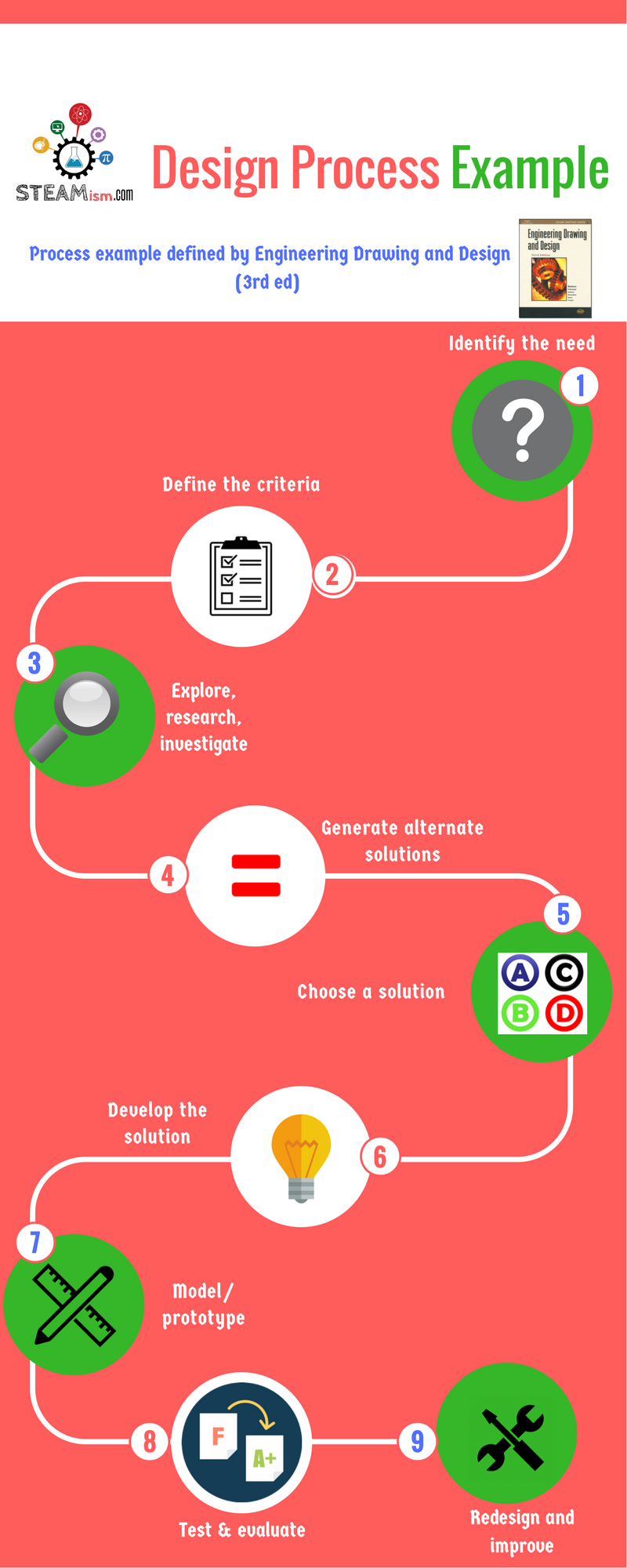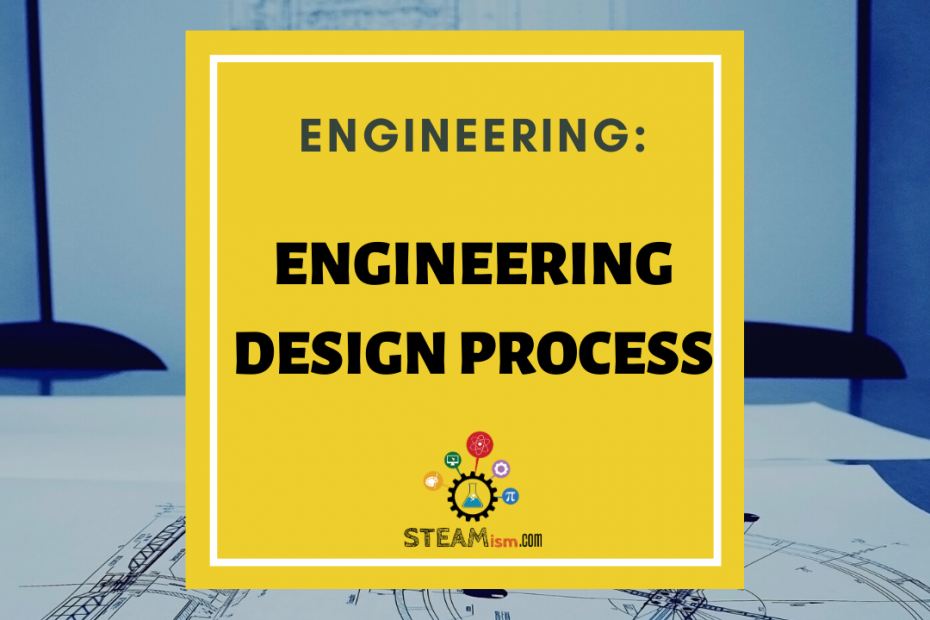What is the Engineering Design Process?
Per Wikipedia, “The engineering design process is a methodical series of steps that engineers use in creating functional products and processes. The process is highly iterative...”
There are many design process examples by different organizations, but the foundation of all of these is the same.
- A well-defined process to research, analyze and find practical solutions to problems.
- There are always multiple solutions to a problem.
- The process is iterative – which means that some steps are repeated over and over again (wash-rinse-repeat) until there are one or more workable solutions to that part of the process. Once that’s done, the engineer or designer can move on to the next step in the process.
Common features in design process examples

Engineering design process infographic
All design process examples follow variations of these steps. NASA’s BEST Engineering Design Model rolls up some of these steps into verbs – Ask, Imagine, Plan, Create, Experiment, Improve. These verbs are helpful allow engineers to think in terms of their actions do during the process. Let’s look at the steps in a few different design process examples and find the shared features.
ASK – What is the need or problem?
If there is a need that has not yet been fulfilled, the design process is for an invention. If there is a problem identified with an existing solution, the design process is for an innovation. Be it an invention or innovation, it is very important for the design team to fully understand the need or problem. This can be done by asking the people who need or use the product, speaking with experts, finding information online or in books, and analysis to identify the real problem.
ASK – What are its requirements?
Every need or problem has a set of requirements that are called criteria and constraints. Criteria are quality standard or features that can be measured and need to be met for the design to be successful. Constraints are limitations on the design (examples of these are – size of design, material that can be used, cost of solution, etc). During every step of the process, the design team compares their solution design against the constraints and criteria to ensure they are on the right track.
IMAGINE – Brainstorm, explore, research, investigate!
-
- Brainstorming = a group of people working together to generate many different ideas.
- The design team can explore, research and investigate one or more of these ideas using online sources, books, and performing experiments.
IMAGINE – Generate alternate solutions
- Are there any alternate solutions available that can fill one or more of the requirements? If yes, can the existing solution be modified to meet all the requirements?
- If not, the designer or team design one or more solutions to fit the problem.
PLAN – Choose a solution
- Choose one of the solutions generated, by asking these questions –
- Does the solution meet all the requirements?
- Is the raw material required for solution available?
- Is the raw material durable?
- Is the raw material cost-effective/affordable?
- Can the solution be manufactured locally?
- Is the manufacturing process cost-effective?
- Can the manufacturing process meet demand quickly?
CREATE/EXPERIMENT – Model/prototype
A prototype is an early single model of a product. It is built to test a solution. This is an easy, cost-effective way of finding mistakes or issues with the chosen solution and to test it among a small focus group, before you manufacture large quantities of it. 3D printing, for example, has become an easy, inexpensive and quick way to create prototypes and test them before release.
CREATE/EXPERIMENT – Test and evaluate
The engineers, design team and a small focus group (potential customers, a quality control team) now test the prototype to see if it meets all the requirements of the problem it is trying to solve. Quality of prototype and durability are also tested in this stage.
IMPROVE – Redesign and improve
Once issues in design, quality, durability and other areas have been identified in the prototype, the design team goes back to the drawing table to redesign the solution and improve the product. This entire process is iterative and sometimes repeated multiple times until the right solution has been identified and the design has been improved.
LINKS
- Want to learn how you can quickly design a part or solution? The CAD and Autodesk Inventor tutorial series can help!
- NASA’s BEST Engineering Design Model serves as a foundation for all BEST activities. BEST Activity Guides were designed to teach students the Engineering Design Process (EDP) as an iterative process that engineers use to guide them in problem solving. NASA Engineers ask questions, imagine solutions, plan designs, create and test models, and then make improvements.
- These books have been used by thousands of Engineers to learn the process with detailed examples. Some are expensive but highly recommended as textbooks for engineers. Note that there are used copies available, and you can also rent them on your way to becoming an engineer!
- An Interview with the Co-Founders of Dermanostix - August 14, 2020
- NASA & SpaceX’s Successful Space Launch - June 12, 2020
- Types of Engineering - June 10, 2020
